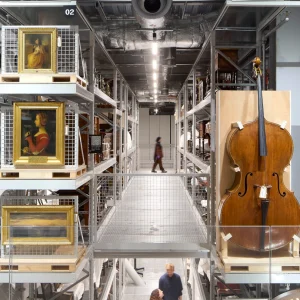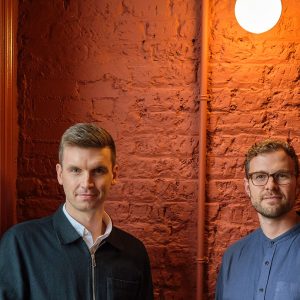The 300m Phare Tower, the proposed office, monument and retail structure, will be one of the tallest in the European Union, once complete. Drawing on the power of parametric scripting, the design of the Phare Tower gathers disparate programmatic, physical, and infrastructural elements from the requirements of the building and its surrounding context, and synthesizes these into a form that seamlessly integrates the building into the idiosyncrasies of its site while expressing multiple flows of movement. The tower embodies state-of-the-art technological advances to become a cultural landmark.
Designed by Pritzker Prize-winning architect, the building’s high-performance skin transforms with changes in light, becoming opaque, translucent, or transparent from different angles and vantage points.
The tower will be located between the 1989 Grande Arche de la Défense and the 1958 CNIT building, the former exhibition hall of the National Inter-University Consortium for Telecommunications, with an architecturally significant glass façade, designed by Jean Prouvé. Glazed exterior escalators soar 35 meters from the pavilion to the tower’s ninth-floor lobby, transporting approximately 8, 000 pedestrians each day. As the visitor rides up the escalators to the Grand Hall, the fully glazed envelope reveals views of the traffic passing underneath, as well as of Parisian monuments in the distance.
Rather than an isolated and autonomous tower, the building has been designed by Thom Mayne as a hybrid structure. As it rises from its tripod base, the tower’s asymmetric profile swells slightly to accommodate the soaring Grand Hall, then becomes more slender in response to wind load, and finally tapers off to a thicket of wind turbines, antennas and hair-like structures on the roof. At its base, the building’s skin opens, exposing a 250ft-high Grand Hall. The Grand Hall becomes the centre for all vertical transportation. From the hall’s security checkpoint, people transition to double-deck banks of express elevators serving the office tower. On the 66th floor, a sky restaurant and a panoramic terrace, offering spectacular 270-degree views, are open to the public.
The tower is crowned with a cluster of antennas and a wind farm of turbines that harvest energy—a metaphorical garden in the sky. Both the form and the orientation of the building respond to the path of the sun. The planar, clear-glazed north façade maximizes interior exposure to year-round natural daylight. A curvilinear second skin of diagonal stainless steel mesh panels wraps the tower’s continuous south, east, and west glazed façades to minimise heat gain and glare and maximise energy efficiency.
This double-membrane façade system improves both energy efficiency and worker comfort, by reducing the solar heat gain and minimising glare, while maintaining panoramic views and affording natural light to the office spaces.
The Phare Tower, which means lighthouse in French has taken years to get through planning.





